Keep Dogs Out of Garden: Expert Tips and Strategies
Having a well-maintained garden can be a point of pride, offering a beautiful space to relax and enjoy the outdoors. However, for dog owners, keeping your four-legged friends out of the garden can sometimes prove to be quite a challenge. Dogs are naturally curious, and it’s understandable that they would want to explore this horticultural wonderland in your backyard.
But in order to protect your garden and keep it flourishing, finding ways to keep your dogs out is essential.
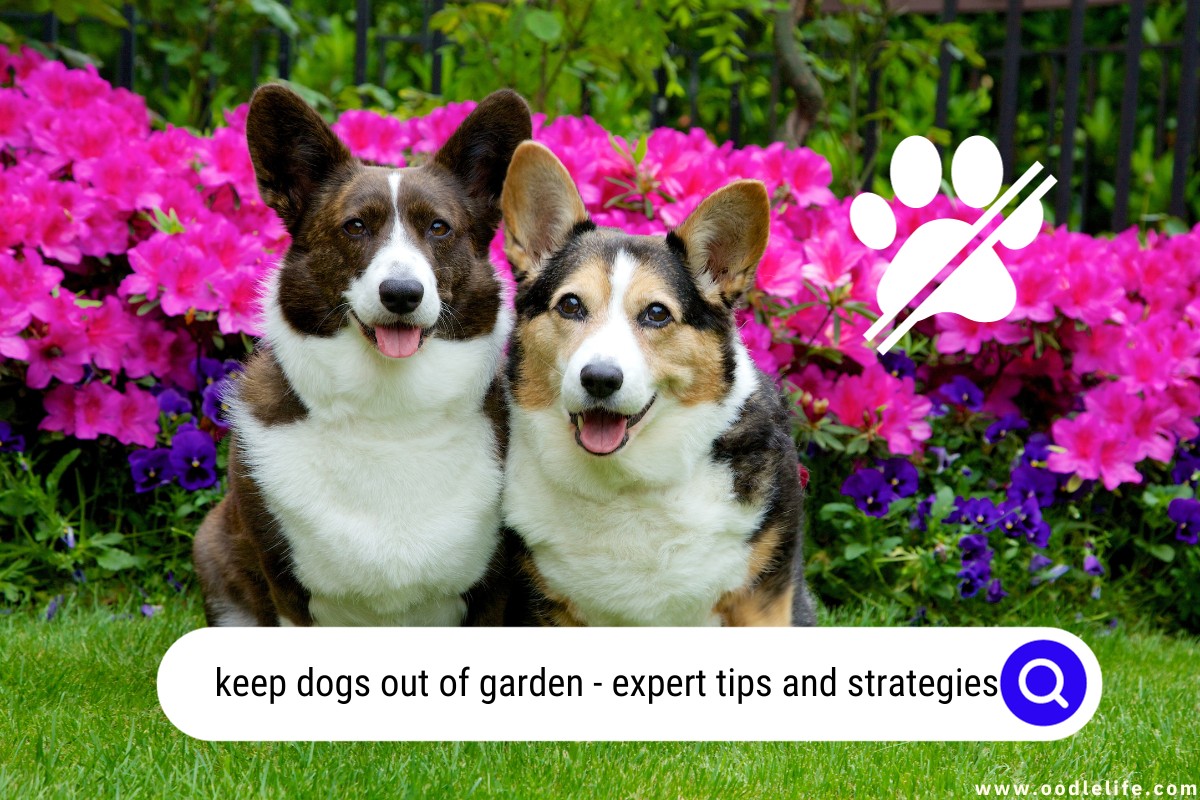
One common issue many dog owners encounter is their canine companions digging up garden beds or lawns. This not only affects the aesthetic appeal of the garden but, more importantly, can damage plants and disrupt their growth. A well-designed barrier could be the answer, but it’s not the only solution you should consider for safeguarding your precious green space.
Various strategies can be employed to keep your dogs away from your garden without stifling their curiosity, such as setting aside areas specifically for them to play and incorporating elements that are stimulating for them elsewhere in the yard. By taking a thoughtful approach, you can find a way to coexist with your dogs while maintaining the integrity and beauty of your garden.
Understanding the Behavior of Dogs
Dog’s Attraction to Gardens
Gardens can be a paradise for your dog, as they offer a variety of scents, textures, and tastes that appeal to their natural instincts. Dogs are attracted to gardens for a variety of reasons, such as hunting for small animals, exploring new territory, or just finding a cool, shady spot to rest.
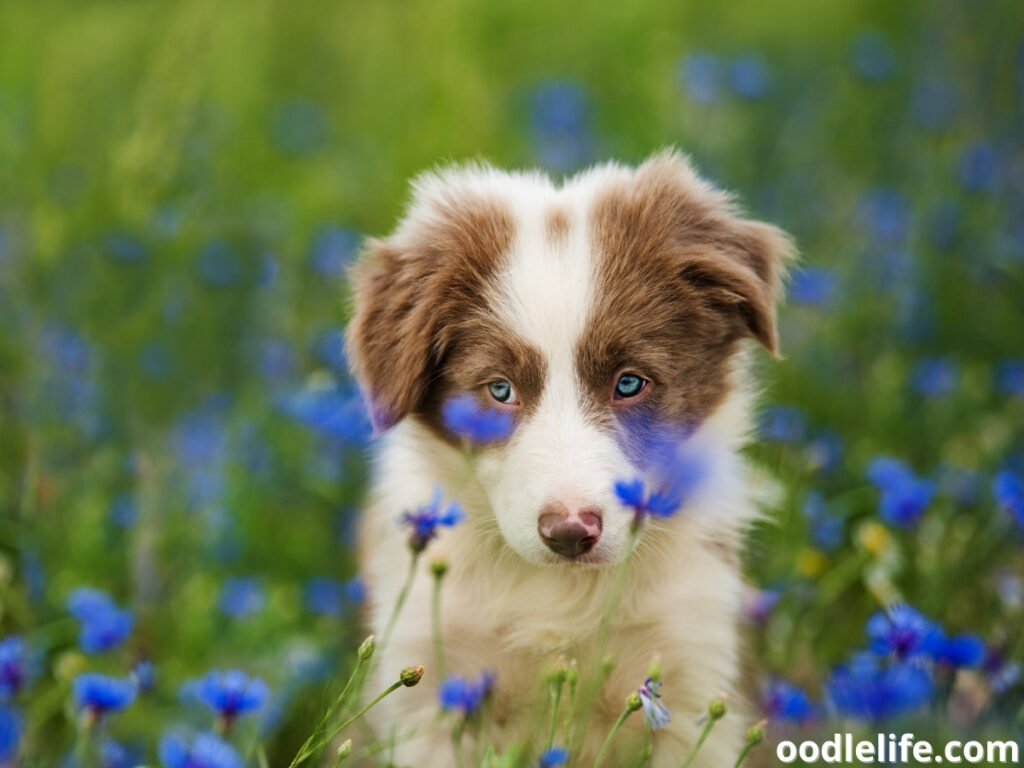
For example, you might notice your dog sniffing around your flowers or plants. This is because they are curious about the different smells that can be found in the garden. They may even attempt to taste some of your plants, so be aware of any poisonous ones that could be harmful to them.
Digging Behavior of Dogs
Digging is a natural behavior for dogs and can be traced back to their ancestors.
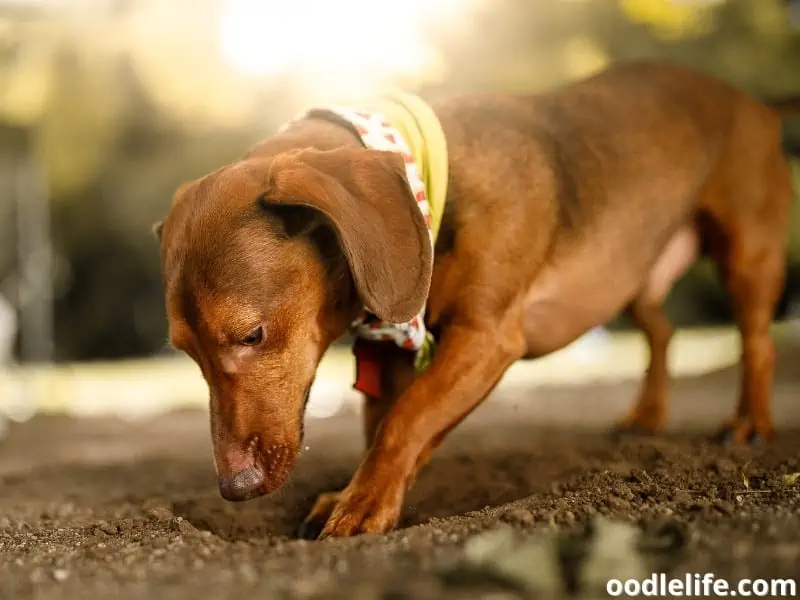
They dig for a variety of reasons, such as:
Entertainment: Dogs may dig as a form of play or to alleviate boredom. If they’re left alone in the yard for extended periods, they may take up digging as a form of entertainment.
Shelter and Comfort: Digging can help them create a comfortable spot to rest, especially on hot days. They might dig a shallow hole to lie in to stay cool or escape the sun.
Hunting: Dogs’ ancestors would dig for prey, such as rodents hiding underground. This instinct can still be present in some dogs, leading them to dig in gardens while hunting for small animals like moles or mice.
Escape: If your dog is feeling confined or frustrated, they might dig near fences to try and escape the yard.
To help prevent these digging behaviors in your garden, you can:
- Provide plenty of physical and mental stimulation for your dog, such as engaging toys, exercise, and training activities.
- Offer designated digging areas, like a sandbox, where they can dig without destroying your garden.
- Ensure that your garden is securely fenced, and consider burying a barrier beneath the fence to prevent escape attempts.
- Monitor your dog while they’re in the garden and redirect any digging behavior you notice.
By understanding your dog’s behavior and addressing their needs, you can keep your garden safe and enjoy a happy coexistence between your canine companion and your outdoor oasis.
Preventing Dogs from Entering Garden
Using Physical Barriers
One effective way to keep dogs out of your garden is to install physical barriers. Fences are a common choice as they provide a clear boundary between the garden and the surrounding area. You can opt for wood, metal, or even plastic fences, depending on your budget and aesthetic preference.
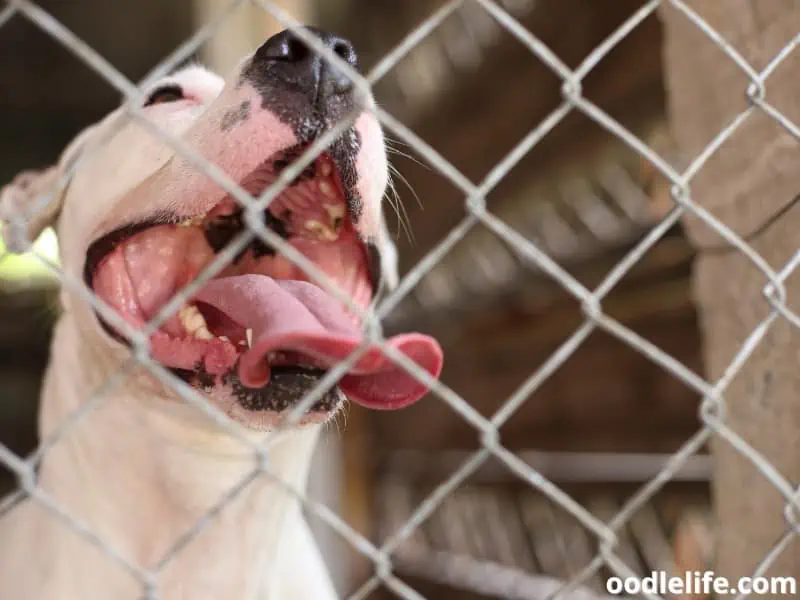
Make sure your fence is tall enough to prevent dogs from jumping over it and ensure there are no gaps that they could squeeze through.
In addition to fences, you may consider using chicken wire or mesh around your garden beds to protect delicate plants from curious paws. Chicken wire is affordable, easy to install, and can be removed when your plants grow strong enough. Alternatively, you can place large stones or other heavy barriers around the perimeter of your garden to deter dogs from entering.
Creating a Pooch Path
An interesting solution for preventing dogs from entering your garden is designing a pooch path. This is a designated pathway for your furry friend to explore without causing any damage to your plants. It could be a simple path made of gravel, stepping stones, or even mulch, which leads around and through your garden, keeping your dog entertained and occupied.
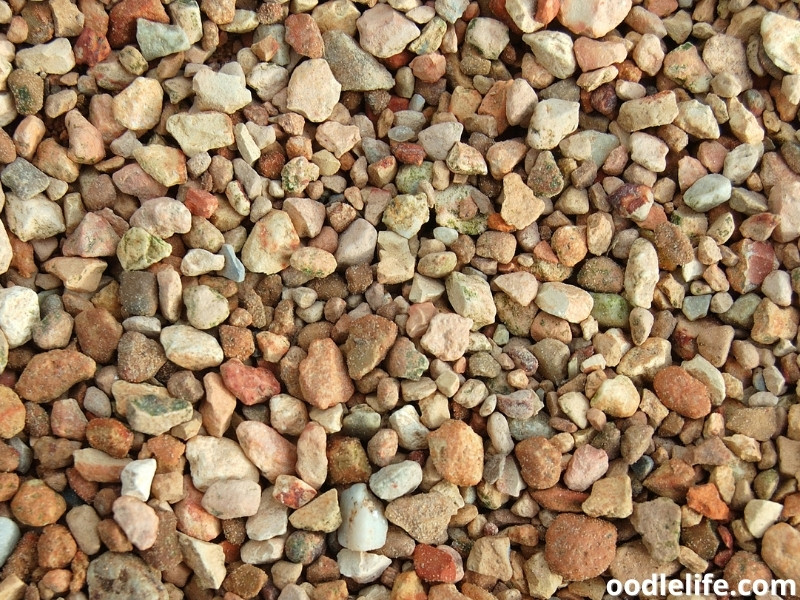
By providing a dedicated pathway, you can encourage your dog to follow it instead of wandering off into the garden beds. It’s also an opportunity for you to add some dog-friendly elements, like water stations or a few toys that can keep them entertained while you’re busy tending to your plants.
Designing a Dog-Friendly Digging Area
Dogs love to dig; it’s a natural instinct for them. Instead of trying to suppress this behavior, embrace it by creating a dedicated digging area in your yard. You can build a simple sandbox or designate a corner of your yard where your dog is allowed to dig.
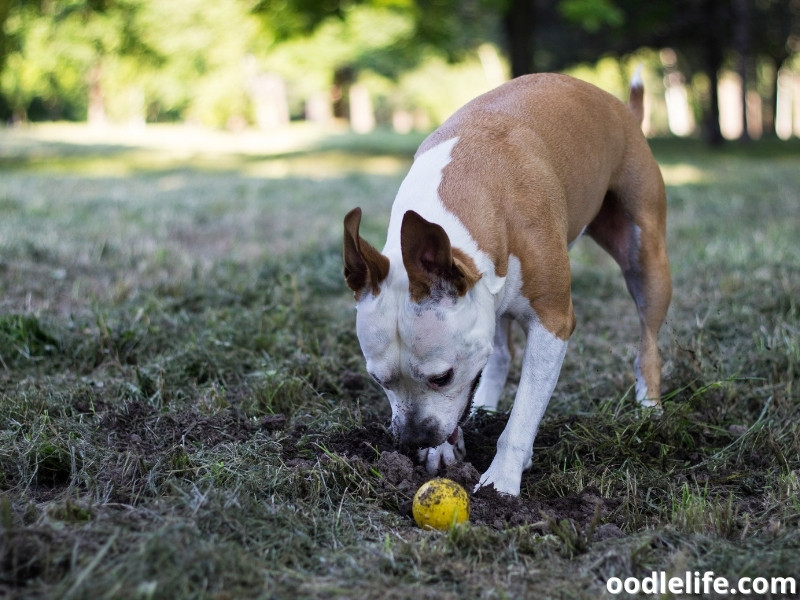
Fill this area with soft, loose soil or sand, and bury some toys or chew bones for your dog to discover. Also, consider adding some dog-friendly plants around the digging area for extra appeal. By providing a designated digging spot, you’ll be able to protect your garden from potential damage while allowing your dog to indulge in their favorite pastime.
Using Repellents to Keep Dogs out of Garden
Commercial Dog Repellents
There is a variety of commercial dog repellents available in the market to help keep dogs out of your garden. These repellents typically use strong, unpleasant scents or tastes to deter dogs from entering your garden or digging up your plants. Some common ingredients used in commercial dog repellents are essential oils, capsaicin (found in hot peppers), and even bitter apple.
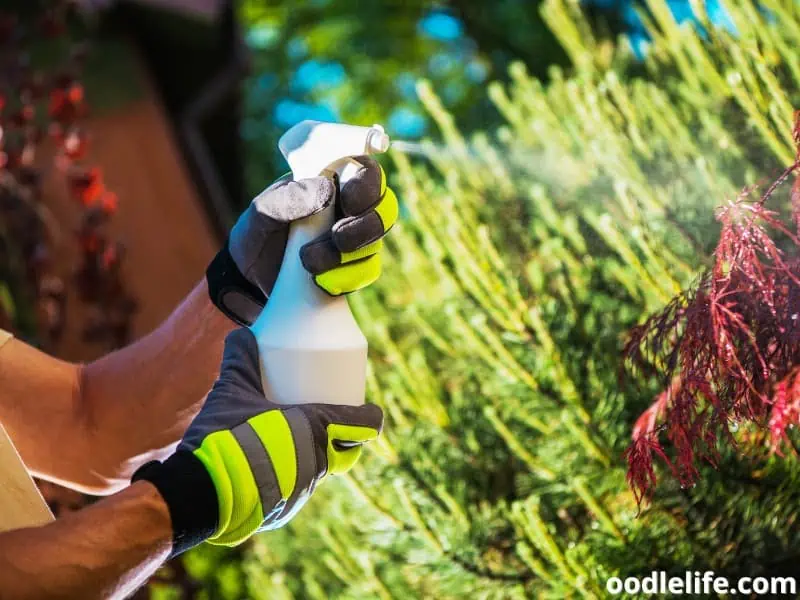
When choosing a store-bought dog repellent, make sure to follow the product instructions for the best results.
Do It Yourself (DIY) Dog Repellents
If you prefer a more natural or cost-effective alternative to commercial dog repellents, you can also make your own DIY dog repellent spray at home. These homemade dog repellents often utilize ingredients that are easily found around your house or in your kitchen.

Citrus Fruits: Dogs generally dislike the smell of citrus fruits such as oranges, lemons, and grapefruits. Scatter the peels of these fruits around your garden or create a mixture of citrus juice and water to spray around the area. This can help discourage dogs from entering your garden.
Coffee Grounds: Repurpose your used coffee grounds by sprinkling them around your garden beds. The strong smell of coffee can act as a natural dog repellent.
Cayenne Pepper and Chili Powder: Create a spicy deterrent by mixing cayenne pepper or chili powder with water, and then spraying it onto your plants or around the periphery of your garden. Be cautious, as this mixture can be irritating to both dogs and humans.
Vinegar and Mustard Oil: Dogs are sensitive to the strong smells of vinegar and mustard oil, making them effective repellents. Mix equal parts water, white vinegar, and mustard oil into a spray bottle and apply it to your plants and around your garden’s borders.
Remember to reapply your homemade dog repellents after heavy rainfall or as needed to maintain their effectiveness. By using commercial or DIY dog repellents, you can create a less appealing environment for dogs in your garden, allowing your plants to thrive without canine interference.
Training Your Dog to Stay Out of the Garden
As a pet owner, you want your dog to enjoy your outdoor space while still maintaining your beautiful garden. Training your dog to stay out of the garden is essential for achieving this balance. Here are some tips and tricks in a clear and concise manner to help you successfully train your dog:
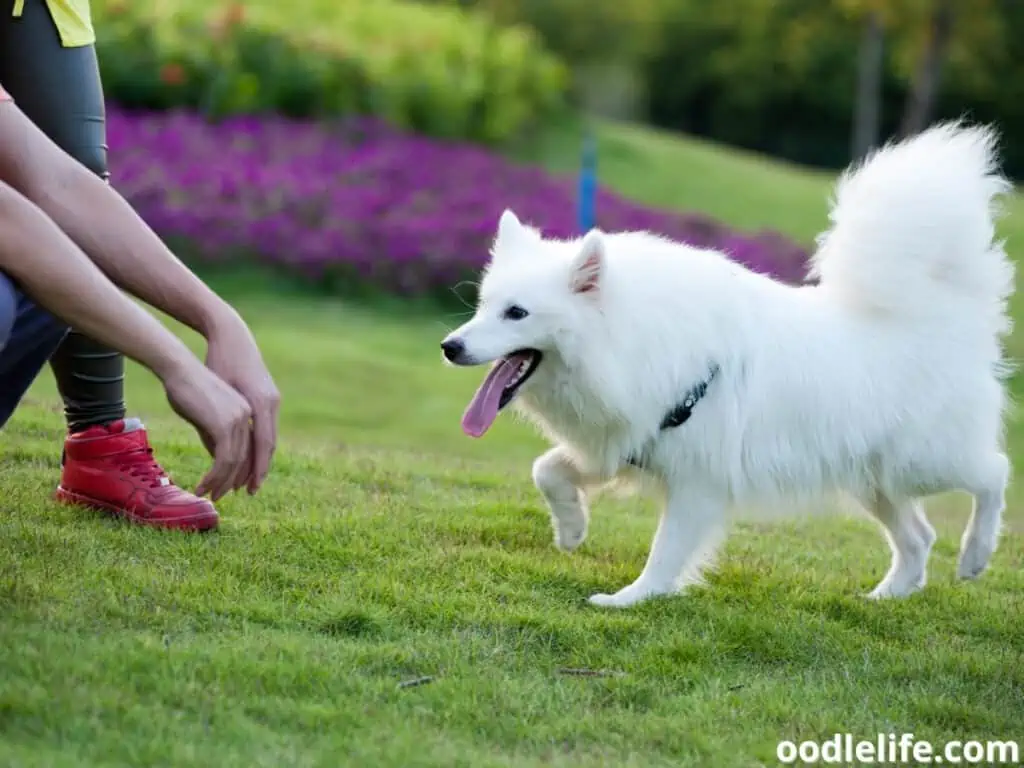
First, establish boundaries in your garden by using physical barriers like fences or decorative rocks. This will help your dog understand where they are allowed to play and where the garden begins. Make sure the barriers are sturdy enough to prevent your dog from accidentally entering the garden.
Next, you can train your dog using positive reinforcement. When you see your dog staying out of the garden, reward them with treats and praise. Keep in mind that consistency is key.
Make a habit of rewarding your dog every time they obey the boundaries, and eventually, they will associate staying out of the garden with receiving a reward.
Another technique is called redirection. If you catch your dog entering the garden, calmly but firmly call their name and redirect them to an appropriate play area. This way, they will understand that the garden is off-limits and learn to associate their playtime with designated areas.
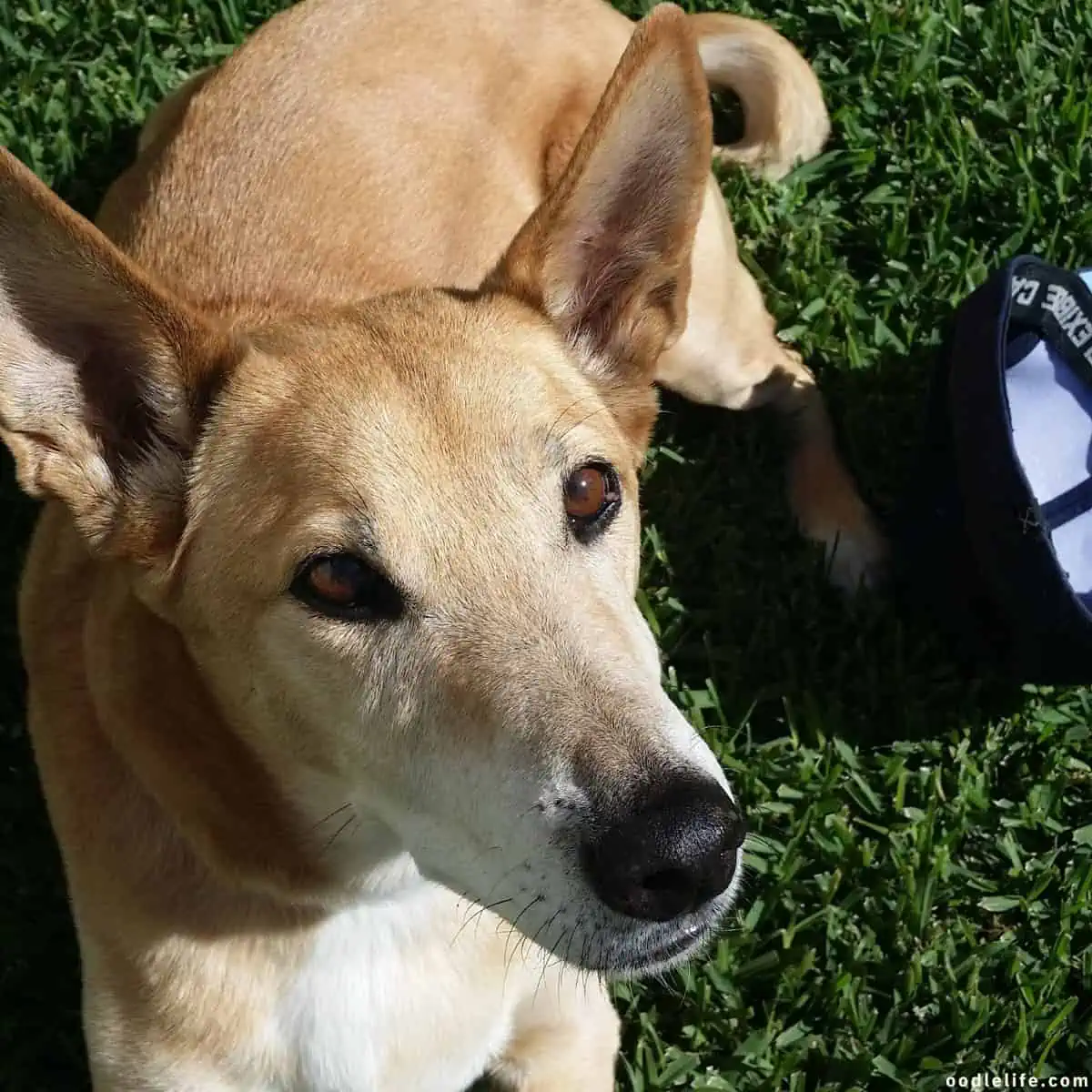
In addition to redirection, you can try teaching your dog basic commands like “leave it” or “off.” These commands help your dog understand that certain behaviors are not allowed and can be specifically used in situations when they attempt to enter the garden.
Lastly, remember that patience is important. Training your dog can be a time-consuming process, and it may take several weeks or even months before your dog completely understands the garden boundaries. However, the benefits of a well-trained dog and a beautiful, undisturbed garden will make the effort worthwhile.
By following these tips and staying persistent in your training, you will soon have a beloved pet that respects your garden and can share in your enjoyment of the outdoors.
Using Motion-Activated Devices
Motion-Activated Sprinklers
Motion-activated sprinklers are an effective method to keep dogs out of your garden. These devices use infrared sensors to detect any movement within a specific range. Once motion is detected, the sprinkler releases a burst of water that startles and scares away the intruding dogs.
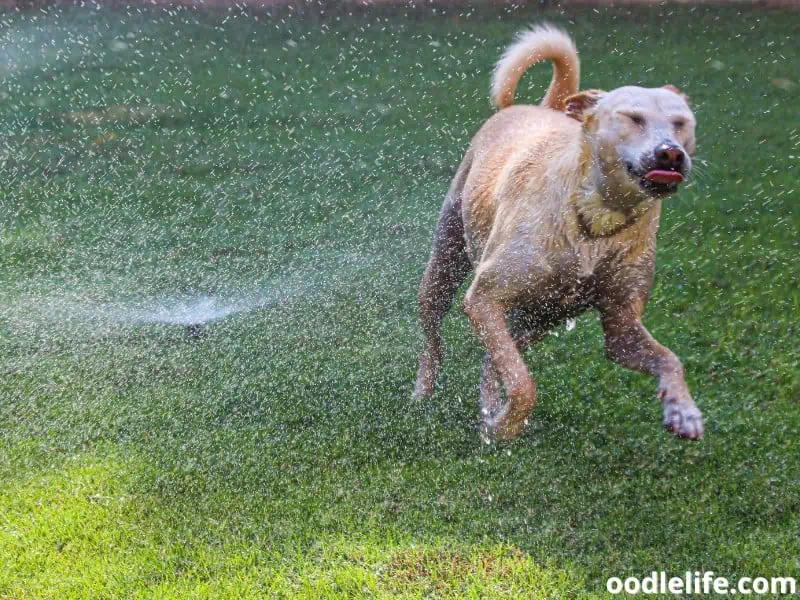
To make the most of your motion-activated sprinklers, you should strategically place them in key areas of your garden where dogs are more likely to enter. You may also adjust the sensitivity of the device, so it only triggers sprays when larger animals like dogs approach.
However, keep in mind that while these sprinklers may help deter dogs from entering your garden, they also have the potential to scare off beneficial wildlife and may consume additional water.
Installing LED Lights
Another option you can consider is installing motion-activated LED lights in your garden. These lights illuminate the area when they detect movement, which may deter dogs from entering your property.
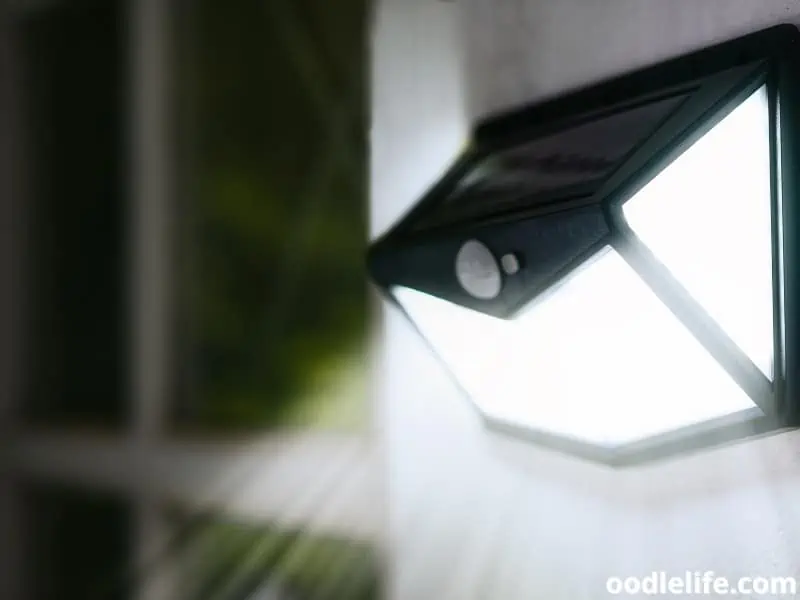
For best results, install the LED lights at multiple points around your garden, with a focus on entries and pathways that dogs are most likely to use. Once the dogs notice the sudden brightness as they approach your garden, they may associate the area with a threat and avoid it in the future.
Remember that motion-activated LED lights will not only deter dogs, but also provide additional security and visibility to your garden during nighttime hours. However, the effectiveness of this method may decrease over time if the dogs grow accustomed to the light.
By implementing these motion-activated devices in your garden, you’re taking a proactive approach to keeping your garden dog-free, while ensuring the safety and well-being of your plants.
Maintaining Your Garden Despite Dogs
As a passionate gardener, you might often face challenges in keeping your plants and seedlings safe from curious pets, especially dogs. Maintaining a healthy garden during the growing season can be a bit tricky with the presence of dogs, but with the right techniques, you can strike a harmonious balance between gardening and pet ownership.
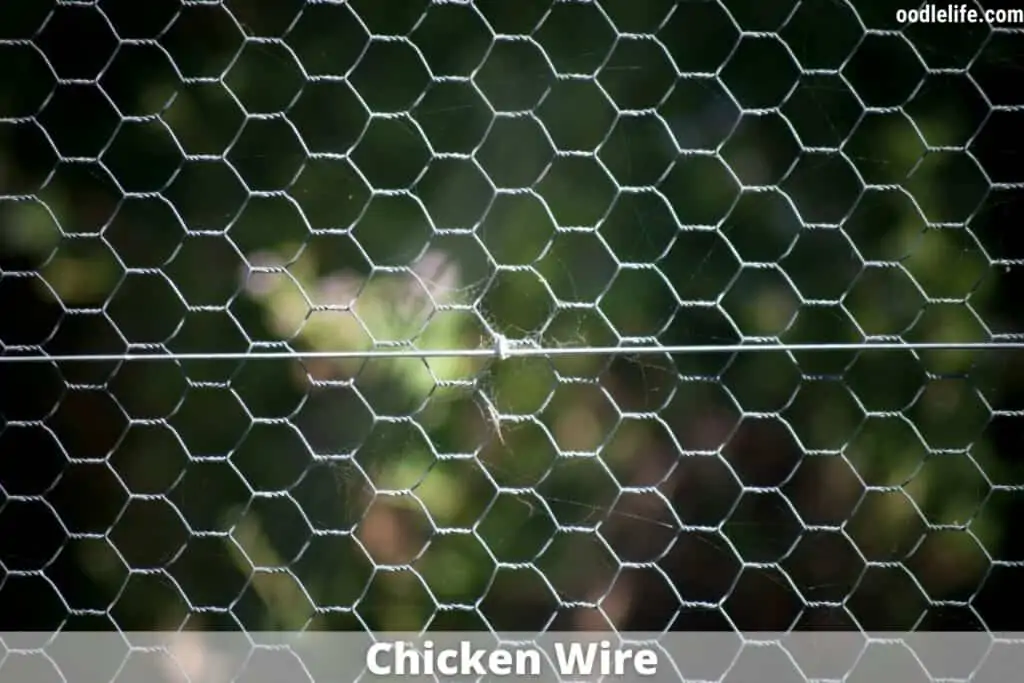
To begin with, create physical barriers around your garden to keep dogs at bay. You can use fencing or chicken wire to encircle the area where you have delicate plants or seedlings. A low fence can serve as a simple yet effective deterrent for most dogs.
Choosing dog-resistant plants can also be a useful strategy. Some plants, like rose bushes and other thorny species, are less likely to be disturbed by dogs due to their prickly nature. Additionally, opting for sturdy plants that can withstand accidental trampling can be beneficial in maintaining a garden shared with dogs.
Another essential aspect of maintaining your garden with dogs is training them. Teach your dog to stay away from the garden area by using verbal commands, positive reinforcement, and rewarding them when they follow your instructions. With time and patience, your dog can learn to respect the boundaries you have set around your garden.
Regularly maintaining the soil in your garden is equally important. Dogs might be attracted to dig in loose soil, so compacting it around the plants can help prevent any damage. Additionally, using strong-smelling repellents, such as citrus peels or coffee grounds, can discourage dogs from getting too close to your garden.
Finally, consider designating a dog-friendly area within your yard that offers fun distractions for your furry friend. For example, you can provide them with a designated digging spot or place toys and obstacles for them to explore. By keeping your dog entertained in their area, you are more likely to protect your garden from their curiosity.
Incorporating a combination of these strategies can help you maintain a beautiful garden even with the presence of dogs. Remember that consistency, patience, and clear communication with your pet will go a long way in ensuring the success of both your gardening endeavors and your dog’s happiness.